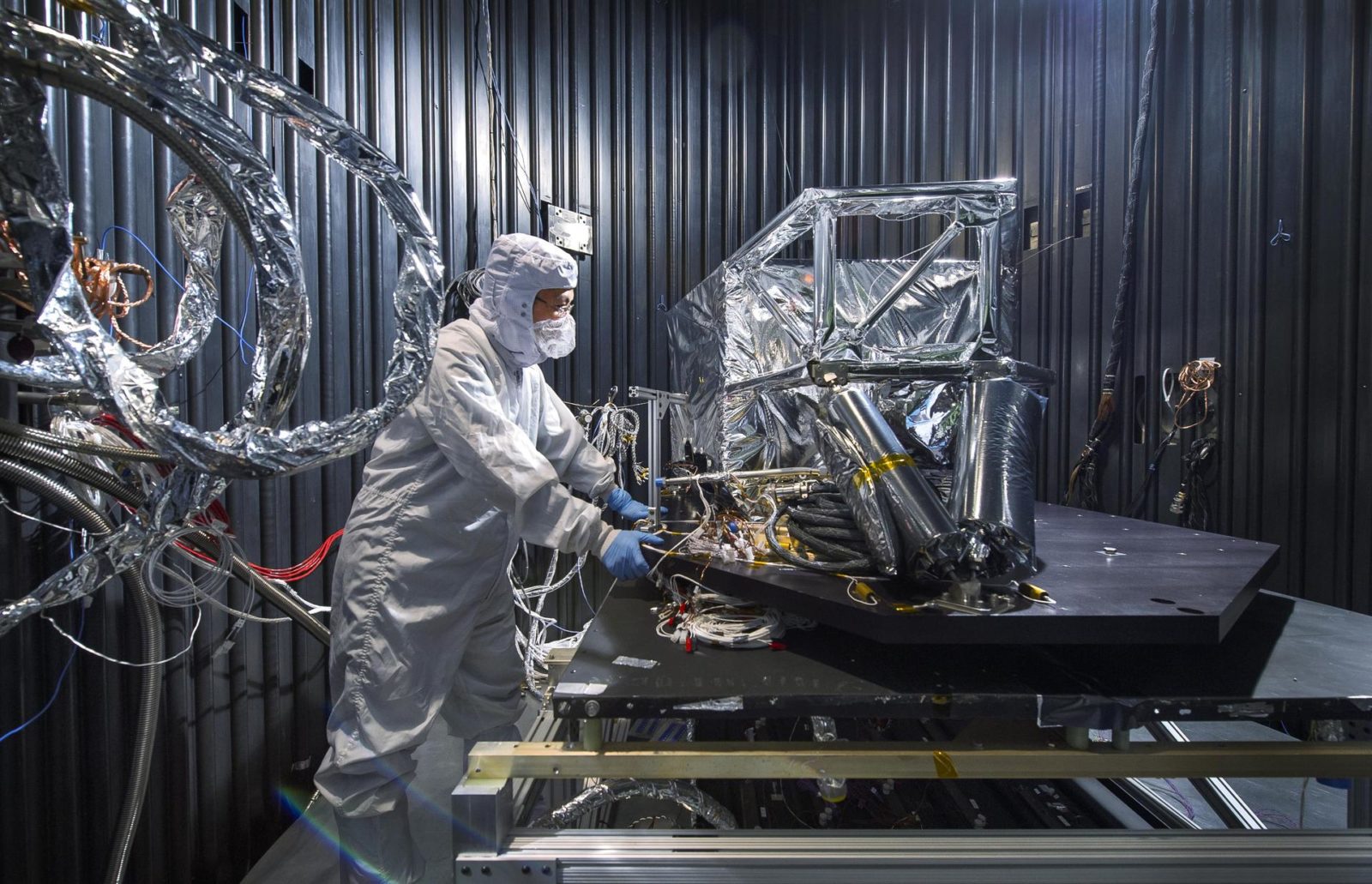Webb telescope teams are supercooling a key instrument to see distant galaxies
By Paul Brinkmann|March 29, 2022
Without the MIRI instrument operating at subzero temps, Webb couldn’t observe oldest galaxies
UPDATE: The MIRI instrument reached its operating temperature of minus 266 degrees Celsius on April 7, NASA announced April 13. Scientists will now gather test images of stars and other known objects to calibrate MIRI and check its operations and functionality.
NASA and science teams for the James Webb Space Telescope are cooling the observatory’s most powerful instrument, the Mid-Infrared Instrument (MIRI), in a three-week process that must succeed if Webb is to image the oldest and most distant galaxies.
The process of supercooling MIRI (pronounced meer-ee) requires a helium-filled cryocooler unit that is relatively common and easy to build for science and technical uses on Earth, but doing such work remotely on a spacecraft like Webb is more complicated, Webb scientist Sarah Kendrew told me in an interview.
“In space, on this extremely sensitive observatory, MIRI was designed to be extremely efficient with its energy usage and to minimize any vibrations that we send to the observatory, which could really impact the science performance,” she said.
The goal is to get MIRI cooled to minus 266 degrees Celsius (minus 447 degrees Fahrenheit), so it can observe celestial bodies or phenomena whose light has been stretched and shifted by time and distance into mid-infrared wavelengths, Kendrew said.
“MIRI is really essential for probing these kind of cold, dense regions where new stars are forming, new planets are forming and the highest-redshift galaxies in the very early universe,” said Kendrew, an astronomer for the European Space Agency who is also an instrument scientist on the Webb project.
The cooling process starts in Webb’s spacecraft bus, where gaseous helium is chilled to subzero temperatures then pumped through 2-millimeter-diameter gold-plated stainless-steel tubes. Before reaching MIRI’s detectors inside Webb’s science instrument module, the helium passes through a valve in the tubes, and the resulting compression and expansion cools it to the level needed by MIRI.
Concern about MIRI’s sensitivity spiked in November because of an incident during the run up to Webb’s launch from South America, Kendrew said. A sudden, unplanned release of a clamp band — which secured Webb to its launch vehicle adapter — caused a vibration throughout the observatory, according to NASA.
“After that incident, we examined MIRI’s cryocooler to determine if it was affected, but so far everything is going really smoothly,” Kendrew said. “We were very excited to reach the milestone [of] getting the helium gas circulating to get us further down in temperature.”
If MIRI wasn’t supercooled to its operating standard, the instrument itself would be emitting heat or radiation that would obscure the most distant observations Webb will make, she explained.
MIRI is designed to operate as coldest instrument on Webb itself, but also the coldest camera in space, according to NASA.
Webb’s three other instruments are sensitive to the near-infrared wavelengths that are closer to the visible light: the Near-Infrared Camera (NIRCam), Near-Infrared Spectrograph (NIRSpec), and Near-InfraRed Imager and Slitless Spectrograph.
Without MIRI, Webb would not be able to accomplish one of its primary goals: seeing further back in time than any previous telescope to the oldest galaxies, Kendrew said.
“You need that mid-infrared coverage as well because it’s sort of spectral lines that we’re looking at, which are not even observable in the near infrared,” she said.
During the MIRI cooling process, helium absorbs heat from the instrument, which is then sent to the warmer side of the spacecraft to dissipate. MIRI also has heaters onboard to control the rate of cooling and prevent ice from forming on its elements during the process.
Kendrew said even trace amounts of moisture or other materials could result in ice that might impair MIRI, but once the operational temperature is reached, those heaters will be turned off.
Once MIRI reaches that temperature, final stages of commissioning the telescope — a nearly six-month process — would begin.
NASA has released preliminary images during the alignment of the telescope showing how the 18 hexagonal segments of its primary mirror lined up to take an image of a star. But the first high-quality science images of distant galaxies, exoplanets and other targets aren’t expected until late June.
Related Topics
Space Science





